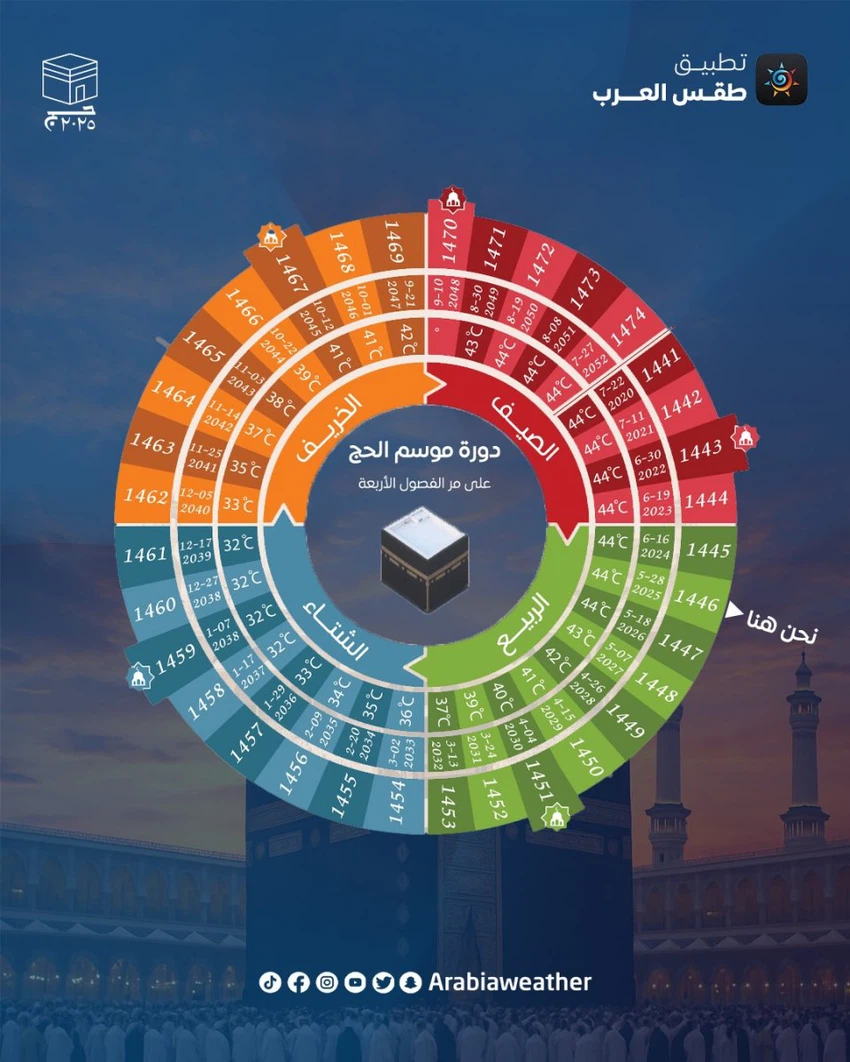Hajj begins its transitional journey from the heat of summer to the cold of winter.
Arab Weather - The Hajj season is tied to the Hijri calendar, which is approximately 10 to 11 days shorter than the Gregorian calendar. This time difference causes the Hajj season to gradually move across the four seasons approximately every 33 years, directly affecting the weather and conditions for performing the rituals.
While the Hajj season in past years has coincided with the peak of summer, with temperatures approaching 50 degrees Celsius in Makkah in some years, this year's Hajj season, 1446 AH (2025 AD), is the last Hajj season to coincide with hot summer weather. Starting next year, the Hajj season will begin to move to late spring and then winter, which means a gradual decrease in the temperatures associated with performing the rituals.
This time shift represents a significant shift in the climate associated with Hajj. In the coming years, as the Hajj season approaches winter, weather conditions are expected to become more moderate, which will positively impact the comfort and safety of pilgrims, especially in light of the health challenges associated with heat stress.

As the Hajj season continues to transition into cooler seasons, the importance of early planning and taking into account the expected weather conditions becomes more apparent. Each season requires special preparations that vary depending on the prevailing weather conditions.
Proper preparation and an understanding of the relationship between the Hijri calendar and the climatic seasons are essential elements for ensuring a successful and safe Hajj season in the coming years.
Arabia Weather App
Download the app to receive weather notifications and more..



